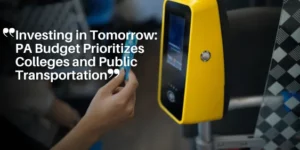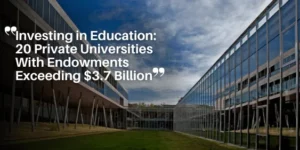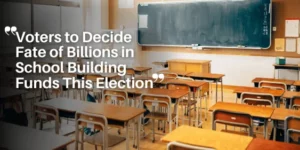State Control vs Federal Authority: What the Education Department Abolition Plan Means for America
📚 Overview of the ‘Returning Education to Our States Act’ and Its Main Objectives
The ‘Returning Education to Our States Act,’ spearheaded by Republican senators, aims to dismantle the U.S. Department of Education 🏛️.
The main objective is to shift control of education policies from the federal government to individual states.
Proponents of the Act believe this change will lead to more tailored and effective educational strategies that better meet local needs.

💰 Proposed Transfer of $200 Billion in Federal Education Funding to States
One of the most significant aspects of the proposal is the transfer of $200 billion in federal education funding directly to states 🏫.
The intention is that states, now having greater control and flexibility, will be able to allocate these funds in ways that will directly address specific local challenges.
This shift aims to empower state governments to innovate and personalize their educational systems.
🔍 Key Motivations Behind the Push to Abolish the Department of Education
The push to abolish the Department of Education is motivated largely by a desire to reduce federal bureaucracy and enhance state autonomy 🏛️.
Republican lawmakers argue that despite substantial federal investments, national educational outcomes have not met expectations.
They believe that placing educational control in the hands of states will lead to more accountability and efficiency ✅.
Additionally, reducing federal oversight is seen as a way to cut down public expenditures and eliminate what many conservatives view as unnecessary federal intervention 💸.
With control shifting from the federal level, the focus now turns to the transfer of power to states and the impact it may have on state-level education policy making.
🔄 Transfer of Power to States
⚖️ The Shift in Authority
The ‘Returning Education to Our States Act’ represents a radical shift in the framework of American education.
A central objective of this proposal is to dismantle the U.S. Department of Education and transfer authority back to the states 🌎.
Proponents argue that this will lead to more localized and efficient educational strategies, tailored to specific state needs.
🏛️ State-Level Policy Making
If the proposal succeeds, states would gain unprecedented control over their education systems 📚.
They would be responsible for crafting policies that suit their unique demographics, economic conditions, and educational priorities.
While this autonomy might foster innovation, it also raises concerns about consistency and cohesion across the nation 🇺🇸.
Each state could potentially develop its own school curricula, teacher qualifications, and student assessments, leading to substantial variations in educational quality 🎓.
📊 Standardization and Accountability
One of the biggest concerns is maintaining educational standards.
The current federal oversight provides uniform guidelines to ensure a baseline of educational quality nationwide.
Removing this central authority might result in a fragmented education system, where educational quality varies widely 📈.
As the debate continues, questions remain about how states will ensure accountability and educational equity without federal guidelines.
💲 Financial Implications
The proposed transfer of $200 billion in federal education funding to states comes with significant financial implications.
📉 Analysis of Federal Spending Reductions and Budget Reallocations
Abolishing the U.S. Department of Education involves substantial reductions in federal spending.
The redistributed funds would go directly to states, allowing for localized educational strategies.
However, this shift also means fewer national education initiatives, which could create inconsistencies in how states fund and manage education.
🏫 Impact on Federal Programs Supporting Disabled and Low-Income Students
One of the biggest concerns is the potential impact on federal programs that support students with disabilities and low-income families.
Currently, the Department of Education ensures that these students receive necessary resources. If funding and oversight shift to states, there is a risk of disparities in educational services ⚠️.
📊 Potential Financial Burden on Individual States
Moving financial responsibility from the federal level to individual states could strain state budgets.
Wealthier states might handle the transition more easily, but less affluent states may struggle to maintain educational quality.
This could widen existing inequalities between states, affecting students’ access to quality education.
Understanding these financial challenges is crucial as the proposal moves through legislative and political hurdles ⚖️.
🏛️ Legal and Political Hurdles
🏛️ Congressional Approval
A major obstacle to the ‘Returning Education to Our States Act’ is obtaining congressional approval. Since the U.S. Department of Education was established by law, dismantling it requires legislative action.
The proposal must pass through both houses of Congress, requiring at least 60 Senate votes to overcome potential filibuster attempts.
This makes the bill’s passage highly uncertain ⚠️.
The ‘Returning Education to Our States Act’ represents a bold and controversial shift in American education policy.
While it promises greater state autonomy, it also raises concerns about educational equity, funding disparities, and accountability.
As the debate unfolds, lawmakers, educators, and the public must carefully weigh the potential benefits and drawbacks of this proposed reform.
⚖️ Legal Challenges
Eliminating a federally established agency such as the Department of Education isn’t merely a matter of legislative approval.
Legal hurdles abound ⚠️.
There will likely be multiple lawsuits challenging the authority to dissolve a federal agency.
Experts suggest that any attempt to dismantle the department would require thorough legal vetting and could end up bogged down in lengthy litigation processes, significantly delaying the proposal’s enactment.
🏛️ Political Dynamics
The political landscape around the ‘Returning Education to Our States Act’ is deeply polarized ⚡.
✅ Conservative supporters argue that dismantling the Department of Education would:
-
Reduce federal bureaucracy
-
Cut unnecessary spending
-
Allow states to have greater autonomy over their educational policies
They believe local control can better address state-specific needs, fostering innovation and flexibility in education.
❌ Opponents, including many educators and public education advocates, argue that eliminating federal oversight could:
-
Disrupt essential educational programs
-
Exacerbate disparities between wealthy and less affluent states
-
Undermine educational equity, particularly affecting low-income and disabled students.
This stark divide means the proposal faces both passionate support and vehement opposition, creating a contentious political battleground.
Understanding these legal and political complexities is crucial to grasping the full scope of the proposal’s potential impact on the American education system.
🔍 Stakeholder Perspectives
🏛️ Conservative Arguments: Reducing Bureaucracy & Increasing State Autonomy
Proponents of the ‘Returning Education to Our States Act’ argue that abolishing the Department of Education would streamline an overextended federal bureaucracy.
They believe that returning control of education policies to the states can better address local needs and values.
✅ Key Conservative Arguments:
-
Decentralization would promote efficiency & innovation.
-
$200 billion in federal education funding would be used more effectively by states.
-
Local control fosters accountability & responsiveness to community needs.
This viewpoint suggests that state governments are more capable of making decisions that cater to their specific populations. A localized approach may drive competition and improve educational outcomes.
⚠️ Concerns from Educators & Public Education Advocates
Educators and public education advocates express concerns about equity and standardization.
❌ Key Criticisms:
-
Loss of federal oversight could jeopardize support for disabled and low-income students.
-
Potential increase in educational inequality due to state-by-state funding disparities.
-
Lack of standardization might lead to inconsistent educational quality across states.
Without a centralized entity to enforce standards, students’ educational opportunities could depend entirely on where they live. Critics argue that federal oversight is crucial to ensuring equal access to high-quality education.
📊 Potential Impact on Educational Standards & Outcomes
Potential Impact of State-Controlled Education
| Aspect | Potential Benefits ✅ | Potential Drawbacks ❌ |
|---|---|---|
| 📚 Curriculum & Policies | More flexibility for states to tailor education to their populations | No uniform benchmarks to compare student performance |
| 🎓 Teaching Methods | Encourages innovation in teaching strategies | Difficulties in measuring national educational success |
| 📏 Educational Equity | States can allocate resources based on local needs | Possible widening of educational gaps between states |
🔮 Future Implications
Long-Term Consequences for the U.S. Education System
If the ‘Returning Education to Our States Act’ is implemented, the long-term consequences for the U.S. education system could be profound.
🌟 Possible Outcomes:
-
Some states may thrive, introducing innovative curricula and improving outcomes.
-
Other states may struggle, unable to match previous funding levels.
-
Lack of federal oversight could lead to uneven educational practices across the country ⚠️
🏫 Educational Equity & Accessibility
One major concern is the impact on educational equity 🏛️.
Federal programs currently provide critical support to students with disabilities and low-income families. Moving these responsibilities to states raises concerns about:
-
Funding disparities
-
Inconsistent resource allocation
-
Potential neglect of marginalized groups
Without federal oversight, there is a risk that educational inequality could widen significantly 📉.
⚖️ Considerations for the Future of Federal Involvement in Education
As the debate unfolds, several key questions emerge 🤔:
-
Should federal oversight be completely eliminated or just reduced?
-
How can educational equity be maintained without federal funding?
-
Will decentralization truly improve education nationwide?
Federal involvement has historically aimed to ensure baseline standards, addressing disparities and promoting equal opportunities.
Dismantling the Department of Education challenges this role, leading to a reassessment of how best to balance national and state control.
As the educational landscape evolves, continuous monitoring and adjustments will be necessary to prevent disparities and enhance educational quality 💡.
📢 Final Thought: The shift to a state-controlled education system presents both opportunities and challenges. Policymakers must carefully navigate this complex issue to mitigate risks while striving to improve education for all students.







